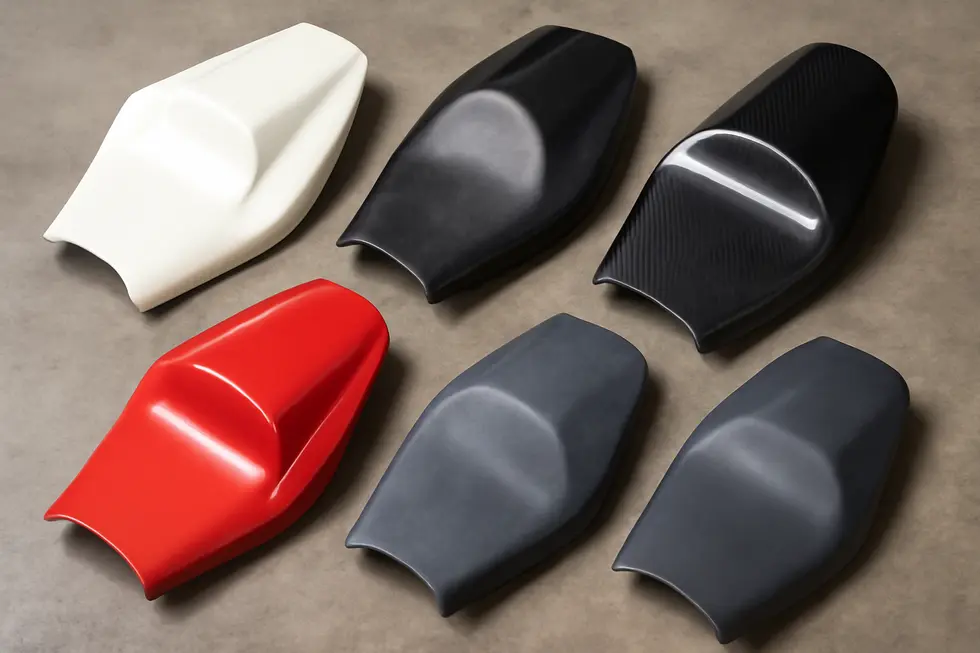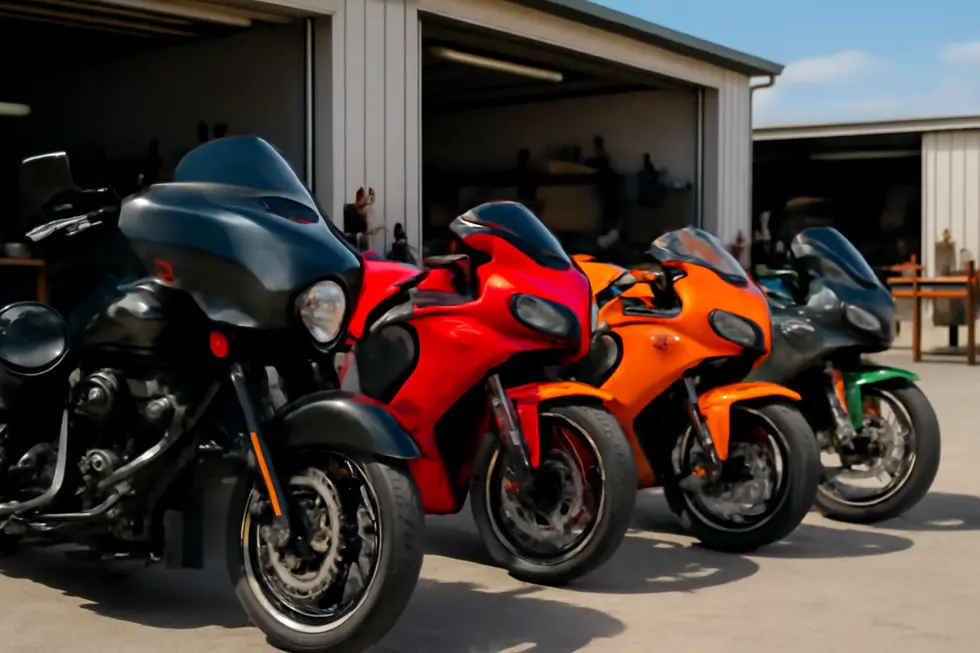Enhancing Performance and Style: The Essential Role of Motorcycle Rear Fairings
November 4, 2025 | by summitfairings

Introduction
Motorcycle rear fairings are often overshadowed by their front counterparts, yet they play a pivotal role in improving aerodynamics, protecting components, and enhancing the aesthetic appeal of the bike. For business owners in the motorcycle industry, understanding the significance of rear fairings can lead to informed decisions about product offerings and customer engagement. This article delves into the performance benefits and material options that make motorcycle rear fairings an essential consideration for anyone passionate about speed and style. The upcoming chapters will provide a comprehensive overview of how these components contribute to a motorcycle’s effectiveness, from optimizing drag to exploring aftermarket opportunities.
Tables of Contents
Chapter 1: Unlocking Speed: The Aerodynamics of Motorcycle Rear Fairings
- Revolutionizing Performance: The Impact of Drag Reduction through Rear Fairings
Chapter 2: Streamlining Performance: The Critical Role of Rear Fairings in Motorcycle Design
- Aerodynamic Enhancements and Rider Comfort: The Impact of Motorcycle Rear Fairings
Chapter 1: Unlocking Speed: The Aerodynamics of Motorcycle Rear Fairings

1. Revolutionizing Performance: The Impact of Drag Reduction through Rear Fairings
The motorcycle rear fairing serves as a transformative component, primarily tasked with enhancing aerodynamic performance through effective drag reduction. As a motorcycle cuts through the air, it encounters resistance that can significantly hinder acceleration and overall speed. The rear fairing is ingeniously designed to mitigate this resistance by streamlining airflow across the motorcycle’s body, ensuring that the rider and machine maintain optimal speeds with reduced effort.
At the core of the fairing’s function is its ability to facilitate aerodynamic streamlining. This streamlined design minimizes turbulent air that otherwise gathers around the bike’s tail, which can create disruptive low-pressure zones. When turbulent air flows freely, it not only creates drag but can also lead to instability during rides at higher speeds. A well-shaped rear fairing addresses this issue; by guiding airflow in a more orderly fashion, it helps smooth out the trajectory of air as it passes over the motorcycle, leading to a more harmonious interaction between the bike and the atmosphere.
The practical effects of reduced drag are impressive. Lower drag means that less power is required from the engine to achieve speed, which directly translates into improved acceleration and the potential for higher top speeds. Riders frequently report noticeable enhancements in throttle response when their motorcycles are equipped with rear fairings. With the engine working more efficiently, fuel economy also benefits; as less fuel is needed to overcome aerodynamic resistance, the motorcycle can cover greater distances on the same amount of fuel.
Moreover, the aerodynamic properties contributed by rear fairings significantly increase stability at higher velocities. The design reduces air turbulence and, by extension, minimizes buffeting—a phenomenon that often leads to discomfort for riders. This is particularly advantageous during both sporty rides and long-distance journeys, where sustained speed can become a factor in rider fatigue. The sensation of riding is thus transformed, allowing for a more composed and enjoyable experience.
In addition to performance improvements, rear fairings can enhance rider comfort substantially. By redirecting airflow away from the rider’s body, they help safeguard against the harsh wind forces encountered at elevated speeds. This attention to thermal and airflow comfort translates to decreased strain on the rider, resulting in less fatigue and a more enjoyable ride overall.
If one seeks a concrete illustration of these benefits, many sportbike models, specifically the Kawasaki Ninja ZX10R, showcase how well-executed rear fairing designs can optimize both aerodynamics and rider experience. The interplay of design and functionality in such models underlines the necessity of the rear fairing in modern motorcycling.
In essence, motorcycle rear fairings represent a convergence of engineering and rider-oriented design. Their capacity to reduce drag while enhancing stability and comfort underscores their role in not just aesthetics but functionality—making them indispensable components for performance enthusiasts. Understanding these benefits not only empowers riders to make informed decisions regarding their motorcycle modifications but also highlights the crucial relationship between aerodynamic efficiency and riding pleasure, revealing just how integral the rear fairing is to modern motorcycle dynamics.
Chapter 2: Streamlining Performance: The Critical Role of Rear Fairings in Motorcycle Design

1. Aerodynamic Enhancements and Rider Comfort: The Impact of Motorcycle Rear Fairings
A motorcycle rear fairing serves as an essential element in enhancing both aerodynamic efficiency and overall rider experience. This molded outer shell, positioned at the rear of the motorcycle, significantly contributes to streamlining airflow, minimizing drag, and ensuring rider comfort, particularly at high speeds. While the front fairing addresses the airflow around the rider and the engine, the rear fairing completes this aerodynamic structure by managing the air behind the bike, reducing turbulence and creating a stable ride.
Aerodynamic Efficiency
By carefully shaping the rear fairing, manufacturers can reduce aerodynamic drag—a key factor affecting performance for sport-oriented motorcycles. When a motorcycle moves, it generates a considerable amount of air resistance, especially at higher speeds. The rear fairing mitigates this effect by smoothing the airflow as it exits the tail of the motorcycle, maintaining a consistent pressure flow. This smoother transition helps stabilize the bike, particularly during cornering and aggressive maneuvers, where balance is critical. Riders often notice that their machines feel more planted and responsive, with enhanced traction when the rear fairing is optimized for aerodynamics.
Improved Stability and Rider Comfort
In addition to enhancing stability, a well-designed rear fairing substantially benefits rider comfort. Wind can create significant fatigue during long rides, especially on sport and touring motorcycles, where riders often find themselves exposed to relentless airflow. The rear fairing helps deflect wind down and away from the rider’s lower back and legs, reducing drag and turbulence that can otherwise lead to uncomfortable riding conditions. As a result, these features enable riders to maintain speed with less effort, improving both comfort and confidence, particularly on extended journeys.
Material Innovation and Performance
The performance of rear fairings is also influenced by the materials used in their construction. Lightweight materials such as ABS plastic, fiberglass, and carbon fiber offer varying advantages in terms of strength, durability, and weight. Carbon fiber, for example, is often favored in racing applications due to its exceptional strength-to-weight ratio, allowing for increased lightweight performance without compromising on structural integrity.
Advanced Aerodynamic Features
Furthermore, innovative design elements such as integrated winglets or spoilers can be found in certain rear fairing models. These advanced features contribute to increased downforce at higher speeds, enhancing cornering grip and traction. Riders often experience this benefit particularly in track scenarios where maximizing grip and handling performance is critical. The aerodynamics of the rear fairing thus become paramount, not just for reducing drag, but also for optimally channeling air to improve overall vehicle dynamics.
In conclusion, the combined benefits of reduced drag, improved stability, and enhanced rider comfort make the rear fairing an indispensable component of motorcycle design, especially for those seeking high performance on the road or track. Riders interested in upgrading their motorcycles can explore various options in the market to find fairing styles that suit their aesthetic and performance needs. For an extensive selection of motorcycle fairings, you can discover unmatched choices at Summit Fairings, your go-to destination for premium fairing solutions.
Final thoughts
In summary, motorcycle rear fairings are not just aesthetic enhancements but integral components that impact speed, stability, and protection. They bring a blend of functionality and style that appeals to various riders, from casual enthusiasts to serious racers. As a business owner, leveraging the insights into aerodynamics and material options for rear fairings can significantly enhance your marketing strategies and customer proposals. By offering quality rear fairings, businesses can tap into a market that values both performance and personalized choices.
Ready to elevate your ride? Summit Fairings delivers premium, custom-fit fairings that blend style and durability. Whether you’re chasing speed or turning heads, we’ve got your bike covered. Don’t wait—transform your machine today. Click, customize, and ride with confidence. Your perfect fairing is just a few clicks away. Act now!
About us
undefined
RELATED POSTS
View all



